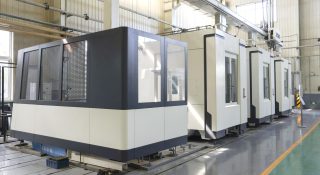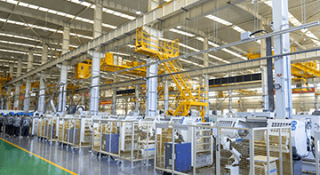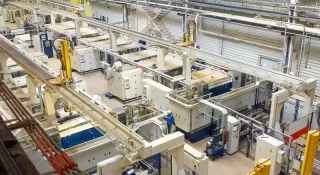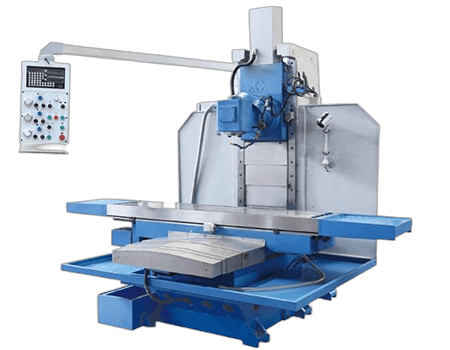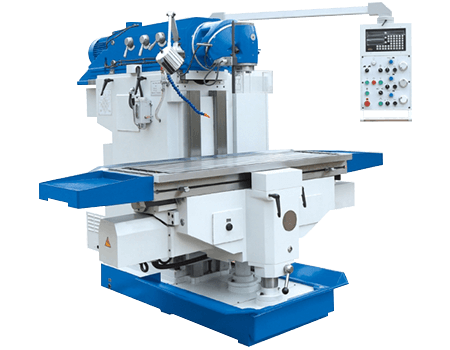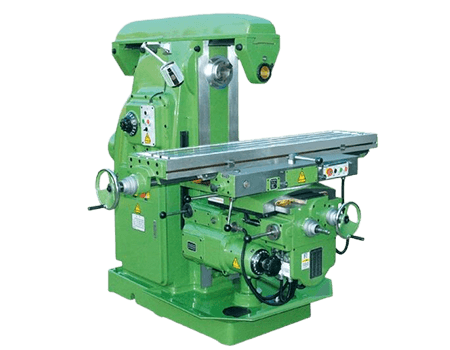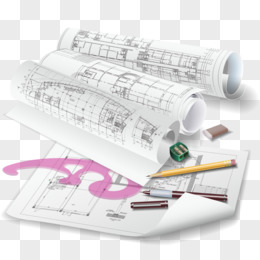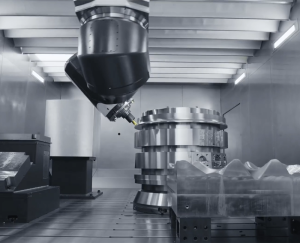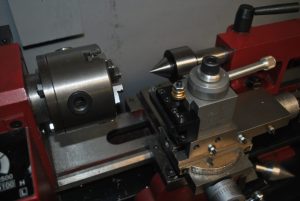Do you ever wonder how they make those really precise parts in your car or in the aerospace industry? The answer is milling.
Milling is a machining process that uses rotary cutters to remove material from a workpiece, which allows you to create complex shapes with high precision. It’s used in industries like automotive and aerospace, and there are different types of machines and operations involved. Understanding the principles, advantages, and trends of milling can help you optimize its use in modern manufacturing.
In this comprehensive guide, you’ll learn how milling is shaping the future of manufacturing, from its history to the latest innovations.
What is Milling
Milling is a machining process that involves using rotary cutters to remove material from a workpiece. You can do this in different directions on one or several axes, at different cutter head speeds, and with different amounts of pressure. Unlike turning, where the workpiece rotates, in milling, the cutting tool rotates while the workpiece stays still or moves along a set path. Milling offers more versatility in creating complex shapes and features compared to drilling, which is mostly used to make holes. Compared to grinding, milling can remove material faster and works with a wider range of materials and applications.
History of Milling
- Early Developments: The first tools were manual, and the first milling machine was invented by Eli Whitney in 1798.
- 19th Century Innovations: Brown & Sharpe developed the universal milling machine in 1861, and Frederick W. Howe made advancements in 1884.
- 20th Century Advancements: Numerical control (NC) technology was introduced in the 1940s, the first CNC milling machine was developed in the 1950s by Richard Kegg and MIT, and CAD/CAM software got better in the 1980s and 1990s.
Working Principles of Milling
Milling involves rotating a cutting tool that removes material from a workpiece by moving along different axes. The cutting tool, which is usually a multi-tooth cutter, rotates at high speeds, and you remove material in small increments as the tool moves forward.
The main parameters in milling:
Cutting Speed: How fast the cutting tool rotates. This affects how fast you remove material and the quality of the surface finish.
Feed Rate: How fast you move the workpiece into the cutting tool. This affects the cutting force, tool life, and surface finish.
Depth of Cut: How thick of a layer of material you remove in one pass of the cutter. This affects how fast you remove material and the load on the cutting tool.
You need to select and control these parameters correctly to get the surface finish and dimensional accuracy you want. The type of cutting tool, the material it’s made of, and its geometry also play a big role in how well and how efficiently you can mill.
Importance of Milling
Milling is important in a lot of industries because it lets you make precise and intricate parts. Some of the key reasons why it’s important include:
Precision and Accuracy: Milling can hold tight tolerances and make high-quality surface finishes, so it’s good for making high-precision parts.
Versatility: You can use milling on a wide range of materials, and you can make complex shapes and features. You can also do things like drilling, tapping, and contouring.
Scalability: You can use milling for prototyping, small batch production, and mass production. CNC milling machines, in particular, let you automate and repeat, so they’re great for large-scale manufacturing.
Application Across Industries: Milling is used in aerospace to make turbine blades, in automotive for engine components, in electronics for circuit boards, and in medical device manufacturing for implants and prosthetics.
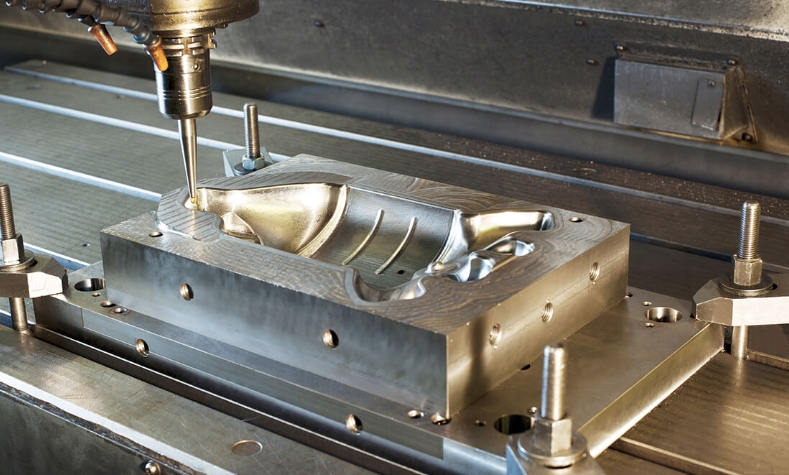
Types of Milling Processes
Vertical Milling Machines
We orient the spindle vertically on vertical milling machines to hold and rotate the cutting tool.
Characteristics: Good for operations such as face milling, end milling, and slotting. The vertical orientation makes it easier to see what you’re doing, which makes it easier to set up and operate.
Applications: Used in the automotive, aerospace, and electronics industries to make flat surfaces, drill holes, and cut complex shapes.
Horizontal Milling Machines
Horizontal milling machines have a spindle that is oriented horizontally.
Characteristics: Good for heavy material removal and high-volume production. Used for operations such as slab milling, gang milling, and straddle milling.
Applications: Good for cutting slots and grooves in large workpieces and for making complex shapes with multiple cutters. Used in big industrial applications.
Gantry Milling Machines
Gantry milling machines have a big, horizontal gantry that supports the cutting tool.
Characteristics: Let you machine big workpieces. They’re rigid and have a high load capacity.
Applications: Used in the aerospace, shipbuilding, and heavy equipment manufacturing industries to make big, complex parts.
Turret Milling Machines
Turret milling machines have a spindle that doesn’t move and a table that can move both horizontally and vertically.
Characteristics: Let you do a wide range of milling operations on one machine, so they’re versatile.
Applications: Commonly used for small to medium-sized workpieces in tool rooms and repair shops. They can do things like drilling, boring, and slotting.
Knee-Type Milling Machines
Knee-type milling machines have a worktable that can move up and down on a saddle that’s supported by a knee.
Characteristics: The knee can move up and down on the column, so you can machine workpieces of different heights.
Applications: Good for all kinds of milling operations, like drilling, reaming, and boring. Used in tool rooms and for custom manufacturing.
Ram-Type Milling Machines
Ram-type milling machines have a movable ram that supports the milling head.
Characteristics: The ram can move in lots of different directions, so you can position the cutting tool in lots of different ways.
Applications: Used for operations that require precise positioning and complex machining tasks. Found in repair shops and custom manufacturing.
Bed-Type Milling Machines
Bed-type milling machines have a bed that supports the workpiece.
Characteristics: The cutting tool can move along multiple axes to do the milling operations. They’re strong and can handle heavy-duty machining.
Applications: Used in manufacturing industries to make big, heavy parts. Used to make things like construction equipment and big molds.
Applications of Milling
Automotive Industry
- Engine Components: Milling makes sure engine parts like cylinder heads, engine blocks, and gears meet the tight specs for performance and durability.
- Transmission Parts: Precision milling of transmission gears and shafts is critical for smooth vehicle operation.
- Structural Elements: Milling is used to make custom parts for automotive prototypes and racing vehicles, where precision and accuracy are everything.
Aerospace Industry
- Turbine Blades: The high precision required for aerospace parts means you have to use advanced milling techniques, like multi-axis CNC milling.
- Fuselage Sections: Milling is used to make complex shapes with tight tolerances for aircraft structures.
- Landing Gear Components: Milling makes sure critical landing gear components are strong and durable.
Electronics Industry
- Circuit Boards: Precision milling allows you to make micro-sized components and complex PCB layouts for electronic devices.
- Enclosures: Milling is used to make heat sinks, connectors, and housings for electronic equipment. It helps those components work well and stay safe.
Medical Device Manufacturing
- Implants and Prosthetics: The high precision and biocompatibility requirements of medical components mean you have to use advanced milling processes.
- Surgical Instruments: Milling is used to make custom dental prosthetics and orthodontic devices that fit patients perfectly.
Tool and Die Making
- Molds and Dies: Milling makes sure molds and dies have the right dimensions and surface finishes to make high-quality parts consistently.
- Advanced Milling Techniques: We employ high-speed milling and hard milling techniques to machine tough materials such as tool steels and carbide.
Renewable Energy
- Wind Turbine Components: Precision milling makes sure turbine blades meet the specs they need to generate energy efficiently.
- Solar Panel Frames: Milling is used to make custom parts for experimental renewable energy projects.
- Hydroelectric Generators: Milling is used to make innovative solutions for sustainable energy.
Advantages and Disadvantages of Milling
Advantages
High Precision: Milling can hold tight tolerances and produce excellent surface finishes, which is great for making high-quality parts.
Versatility: Milling can make complex shapes and features, so it works for a wide range of applications.
Automation: Milling machines can do multiple operations in one setup, which saves time and money.
Robots: CNC milling machines can be automated, which makes them more efficient and less prone to human error.
Disadvantages
Time-Consuming: Can be a time-consuming process, especially for large or complex parts.
Complex Setup: Initial setup and programming for CNC milling can be complex and require skilled operators.
Heat Generation: Generates significant heat, requiring proper cooling and lubrication to prevent tool wear and workpiece distortion.
High Cost: Milling machines and tools can be expensive, making the initial investment high for small-scale operations.
Materials You Can Mill
Metals: You can mill steel, aluminum, titanium, brass, and other metals. Each metal has different properties that affect what kind of tools you use and how you cut it.
Non-Metals: You can also mill plastics (like acrylic, nylon, and polycarbonate) and composites (like carbon fiber and fiberglass). These materials need special tools and techniques to get the finish and accuracy you want.
What Different Materials Do
Different materials have different properties that affect how you can machine them. For example, aluminum is light and easy to machine, so it’s great for aerospace and automotive parts. Steel is strong and tough, but you have to be careful how you cut it or you’ll wear out your tools. Plastics and composites are light and don’t rust, so they’re good for electronics, medical stuff, and aerospace. Knowing what each material is like helps you pick the right tools and cut it the right way.
Standards for Milling
Industry Standards and Regulations: You have to follow industry rules to make sure your milling is safe, good, and the same every time. Organizations like ISO (International Organization for Standardization) and ASTM (American Society for Testing and Materials) make rules for materials, machining, and how to check stuff. Following these rules helps you make parts that work right and don’t break.
Quality Control Standards: To make sure your milling is good, you have to measure and check a bunch of things. You have to measure the size, the finish, and the material to make sure it’s what you want. You can use things like SPC (statistical process control), CMM (coordinate measuring machines), and NDT (non-destructive testing) to keep your milling good and the same every time.
Different Types of Milling Operations
Face Milling
Face milling uses a cutter with lots of teeth to make a flat surface on your part. You use it to make big, flat areas and get a smooth finish. You can do face milling on a vertical mill or a horizontal mill.
End Milling
End milling uses an end mill cutter to make slots, pockets, and other shapes. The teeth on the end mill do the cutting. End milling is great for making profiles, cavities, and shapes in your part.
Angular Milling
Angular milling is when you cut at an angle to the surface of your part. You do this to make things like chamfers, bevels, and grooves. To achieve the desired angle and finish in angular milling, it’s essential to set up and align the equipment meticulously.
Form Milling
Form milling uses a special cutter to make a shape or profile. You use it to make things like gears, threads, and other shapes that need a special form. We manufacture form milling cutters specifically to match the shape you intend to create.
Slot Milling
Slot milling is when you make a slot or groove in your part using a slot mill or an end mill. You do this to make keyways, channels, and slots that are different widths and depths. Slot milling needs to have the right cutting conditions to make the size and finish you want.
Milling Process
- Before You Start Milling
Selecting the right tool: Choose the right type, material, and geometry for your cutter.
Preparing the workpiece: Clean, secure, and align the material.
- Clamping the Workpiece
Methods: Use vises, clamps, and fixtures to hold the workpiece.
Considerations: Make sure it’s stable and accurate, and reduce errors.
- Milling Steps
Roughing: Remove most of the material.
Semi-finishing: Get the intermediate dimensions and surface finish.
Finishing: Get the final dimensions and a high-quality surface finish.
- Cutting Parameters
Cutting speed, feed rate, depth of cut.
Monitor tool wear and make sure you have enough cooling and lubrication.
- Quality Control
Inspect and measure the finished part.
How Long Does Milling Take?
Estimating Machining Time
To estimate how long it takes to machine something with milling, you have to consider things like how complex the part is, what kind of material you’re cutting, what your cutting parameters are, and what your machine can do. For example, a simple part with straight cuts made out of a soft material like aluminum might take less time than a complex part with intricate features made out of hardened steel.
Factors That Affect Machining Time
There are several factors that affect how long it takes to machine something, including optimizing the tool path, cutting speed, feed rate, depth of cut, and how efficient your machine is. Good planning and programming can reduce machining time while maintaining high quality. Advanced CNC programming techniques, such as high-speed machining and adaptive feed control, can further optimize the process and improve productivity.
Milling Precautions
Safety Precautions: Safety is the most important thing when you’re milling. You need to wear the right personal protective equipment (PPE), like safety glasses, gloves, and hearing protection. You need to make sure your work area is free of hazards, use the right clamping methods, and follow the safety rules for your machine. You also need to keep your machines and tools in good shape by maintaining and inspecting them regularly.
Common Problems and Solutions: Common milling problems include tool wear, chatter, poor surface finish, and dimensional inaccuracies. Select the appropriate cutting tools and parameters, align and clamp your tools securely, and utilize the correct cutting fluids to address these issues effectively. You can also keep an eye on your process and make adjustments to catch problems before they ruin your parts.

Key Points for Milling Operations
To make sure you’re safe and efficient when you’re milling, follow these guidelines:
- Wear the right safety gear, including snug work clothes, a hard hat, safety glasses, and a mask. Don’t wear gloves.
- Check your milling machine’s parts and safety devices before you start to make sure everything is in good shape.
- When you put your workpiece in or take it out, make sure the table is in a safe position. Don’t point the force toward the cutter when you clamp your workpiece.
- Use special pads to put your cutter in and take it out so you don’t touch it directly.
- Make sure your irregular workpieces and fixtures are balanced so you don’t put uneven force on the table.
- Don’t let the table go all the way to the end when you’re moving it fast or automatically so you don’t hurt the lead screw.
- Don’t measure or adjust your workpieces or stop the cutter with your hand while the machine is running.
- Don’t pick up or eat the chips so you don’t get hurt.
- Turn off the handwheel clutch when you’re moving the table fast so you don’t get hurt.
- Put the handle in the middle and don’t reverse it directly when you change the direction of the table.
- Take care of your dividing head and the table surface when you’re milling so you don’t hurt them.
- Use a multi-insert cutter for face milling and pick the right cutting parameters so you don’t get vibration.
- When you’re done, stop the table in the middle and lower the lifting table all the way.
- Before you use a CNC vertical milling machine, get your programs and parameters ready for what you’re going to do. Run a test before you run it automatically or semi-automatically.
Follow these guidelines to stay safe and use your milling machine correctly, enabling you to complete your work faster and produce better parts.
Milling in the Future
The milling industry is always changing with new technology. Digitalization and intelligentization are turning traditional milling operations into smart manufacturing processes. Innovations like real-time monitoring, predictive maintenance, and advanced simulation tools are making things more efficient and accurate. The use of new materials like ceramics and composites is driving the development of special cutting tools and techniques.
Automation and intelligent manufacturing are becoming more common in milling. Things like automatic tool changes, robots that move your parts around, and systems that check your parts for quality are making everything easier and reducing the amount of work you have to do. Intelligent manufacturing systems use data analytics, machine learning, and artificial intelligence to make your milling process better, help you make better decisions, and make you more productive overall.
FAQs
What are the three types of milling?
The three primary types of milling are:
1.Face Milling: This type involves cutting with the end of the cutter, producing a flat surface. It’s ideal for creating a smooth finish on the surface of the material.
2.Peripheral Milling: Also known as plain milling, this type uses the cutter’s sides for machining, suitable for cutting deep and producing slots or grooves.
3.End Milling: This involves the use of an end mill to cut along the material’s edge, perfect for contouring, profiling, and complex shapes.
What Is the Difference Between Milling and Cutting in Machining?
Milling and cutting are both machining processes but differ in their applications and methods:
Milling: A process that uses rotary cutters to remove material by advancing a cutter into the workpiece. It allows for precise control over the shape and surface finish, suitable for creating complex parts with various angles and shapes.
Cutting: A broader term that includes any process of removing material from a workpiece. It can involve methods like sawing, turning, and even abrasive processes. Cutting generally refers to simpler, straight-line removal of material.
What is the difference between milling and 3D printing?
Milling and 3D printing are fundamentally different manufacturing processes:
Milling: A subtractive manufacturing process where material is removed from a solid block using cutting tools to achieve the desired shape. It offers high precision and is suitable for various materials, including metals and plastics.
3D Printing: An additive manufacturing process where material is deposited layer by layer to build an object. It excels in producing complex geometries with minimal waste and is particularly useful for prototyping and custom parts.
Is Milling Expensive?
The cost of milling can vary based on several factors:
- Material: The type of material being machined significantly impacts the cost. Harder materials like titanium are more expensive to mill than softer materials like aluminum.
- Complexity: Parts with intricate designs and tight tolerances require more time and precision, increasing costs.
- Volume: Higher production volumes can reduce the per-unit cost due to economies of scale.
- Equipment and Tools: High-end milling machines and specialized cutting tools can also add to the expense.
Milling offers excellent precision and versatility, making it a valuable process for high-quality parts, even though it can be costly compared to some other manufacturing methods.
How about the precision of milling?
Milling is known for its high precision, making it ideal for producing parts with tight tolerances. Modern CNC milling machines can achieve tolerances as tight as
±
0.001 inches (
±
0.025 mm) or even finer with advanced techniques and equipment. The precision of milling allows for the production of complex parts with detailed features, ensuring excellent repeatability and consistency across multiple parts.


